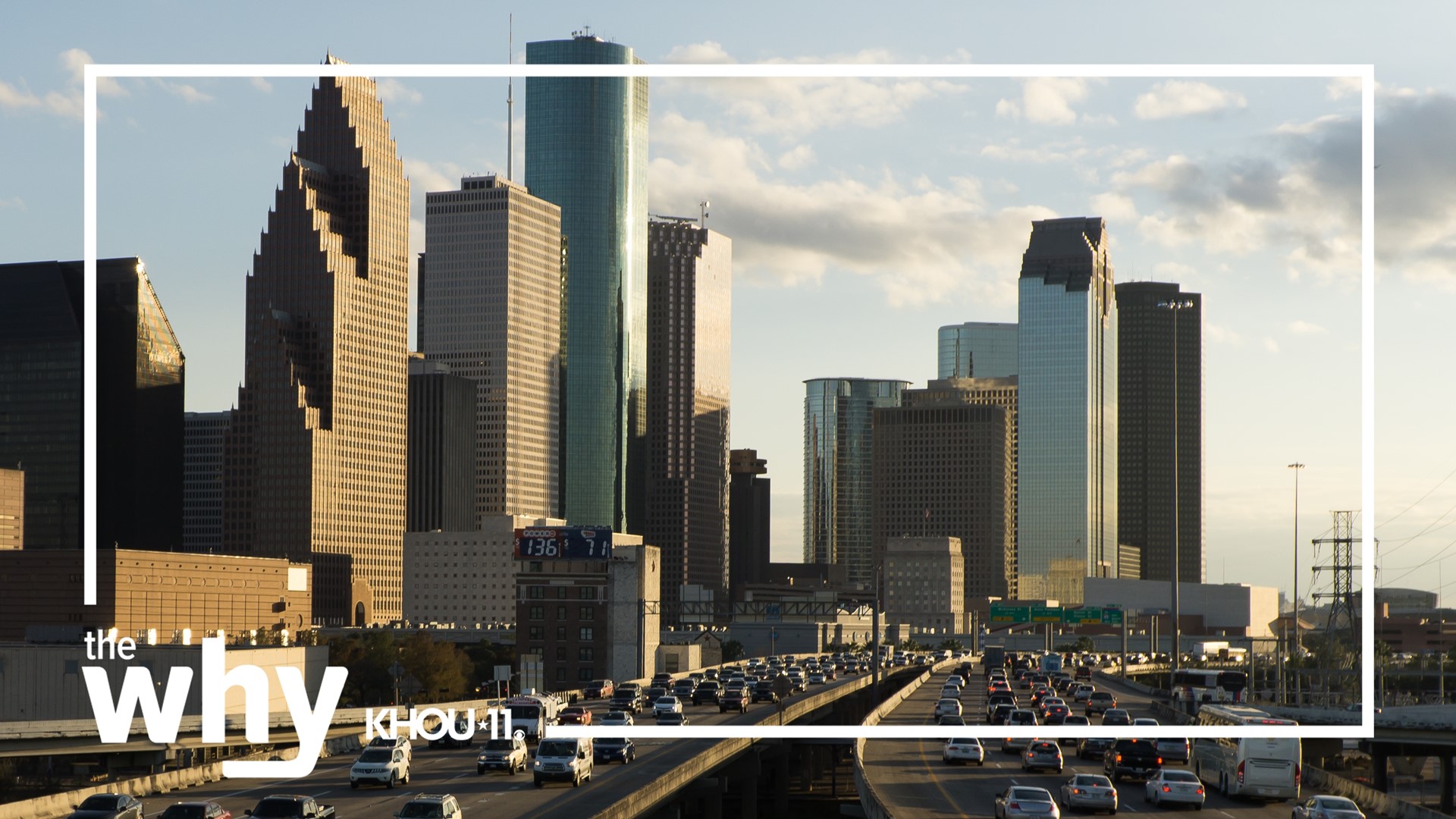HOUSTON — Why are some cities like Houston considered “heat islands?"
According to the EPA, heat islands are cities that have higher temperatures than surrounding rural areas. It’s probably not a huge shock that the city of Houston is considered a heat island.
In 2020, the city worked with several agencies to conduct a heat mapping project.
It found there was over a 17-degree difference between the hottest and coolest areas in Houston and Harris County. For example, researchers found on Richmond Avenue near Chimney Rock that was 103 degrees, while one the same day it was 86 degrees in Channelview.
Causes of heat island
According to the EPA, heat islands form for several reasons, including reduced natural landscapes in urban areas, urban material properties, urban geometry, heat generated from human activities and geography.
Trees, vegetation, and water bodies can help cool the air by providing shade, transpiring water from plant leaves, and evaporating surface water, respectively, according to the EPA. Hard, dry surfaces like roofs, sidewalks, roads, buildings, and parking lots contribute to higher temperatures.
Human-made materials such as pavements tend to absorb and emit more of the sun’s heat compared to trees, vegetation, and other natural surfaces.
The EPS also said the dimensions and spacing of buildings within a city influence wind flow and urban materials’ ability to absorb and release solar energy. So, in areas that have been heavily developed, those surfaces and structures become large thermal masses that cannot release heat quickly.
Narrow streets and tall buildings can also block natural wind flow.
Vehicles, air-conditioning units, buildings, and industrial facilities all emit heat as well. These can also contribute to the heat.
Geography can also be an issue with clear weather conditions resulting in more severe heat islands with more solar energy reaching urban surfaces and minimizing the amount of heat released.
But there are ways to combat heat islands.
How can we stop the heat island effect?
One of the simplest ways is to increase vegetation. More trees and grass not only bring down temperatures but also reduces flooding by absorbing rainwater.
Buildings can also have cool roofs, made with materials or coatings that reflect sunlight. The same concept can be used for pavement as well.
Los Angeles has already started this, painting over roads with a white coating called cool seal that was designed by the military to keep planes cool.

